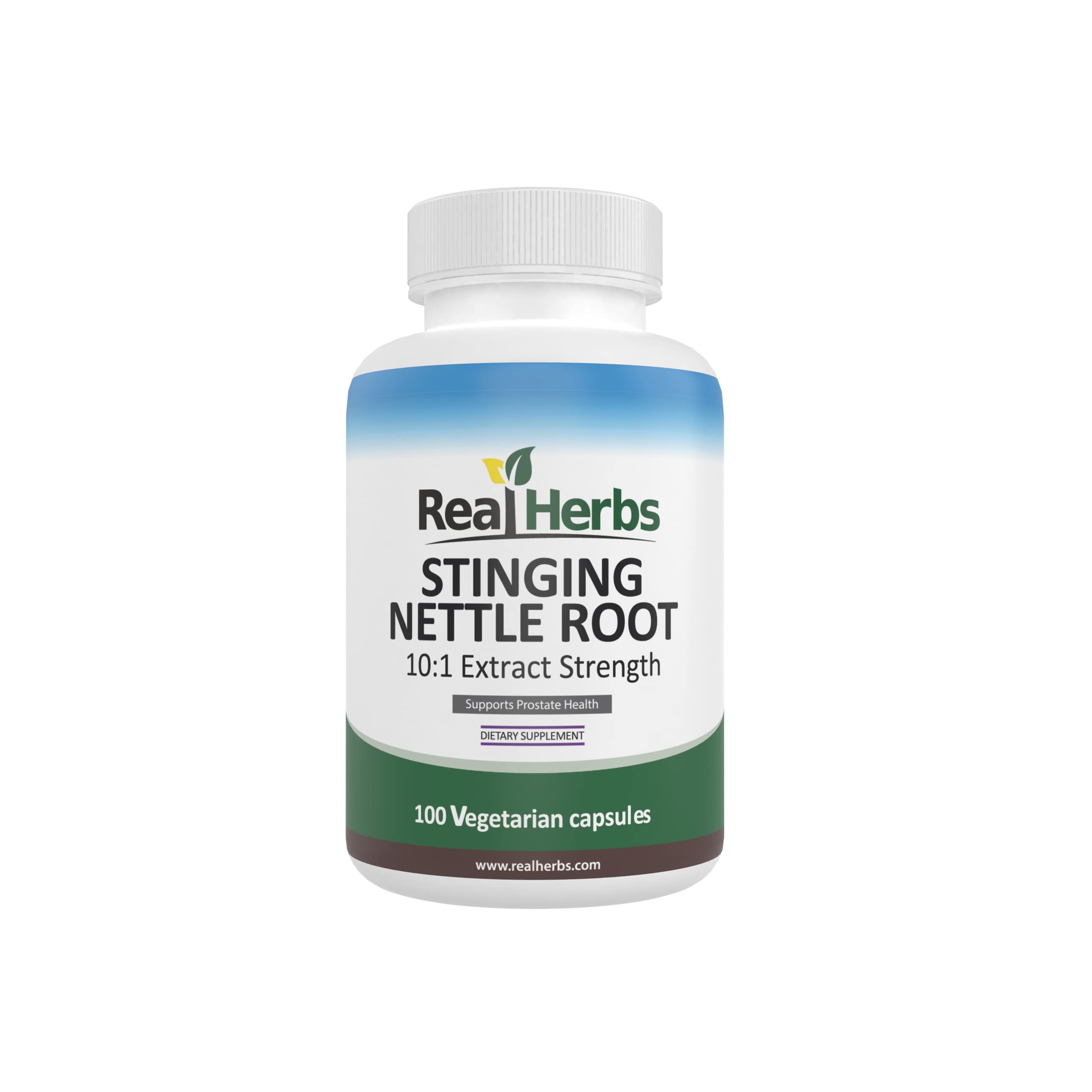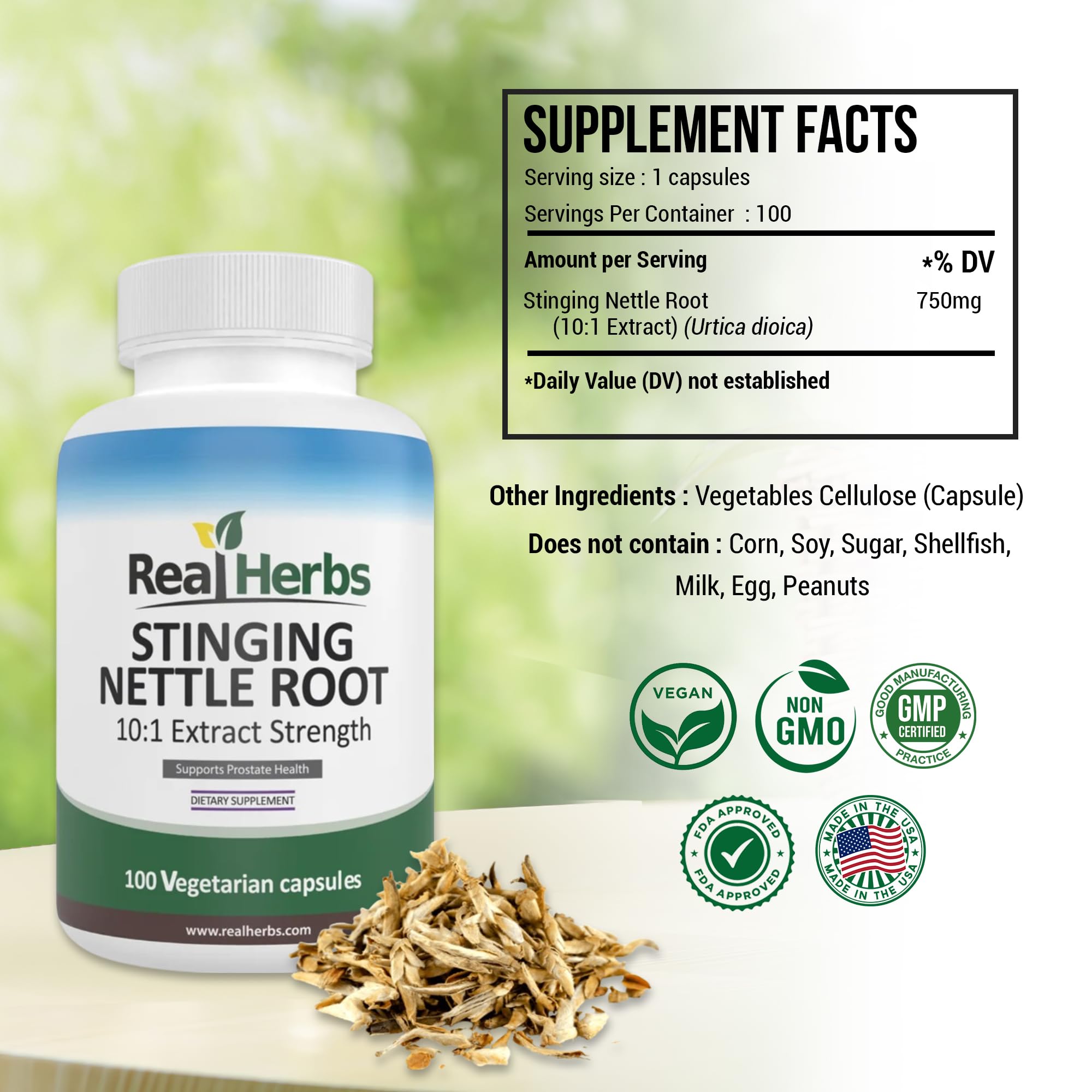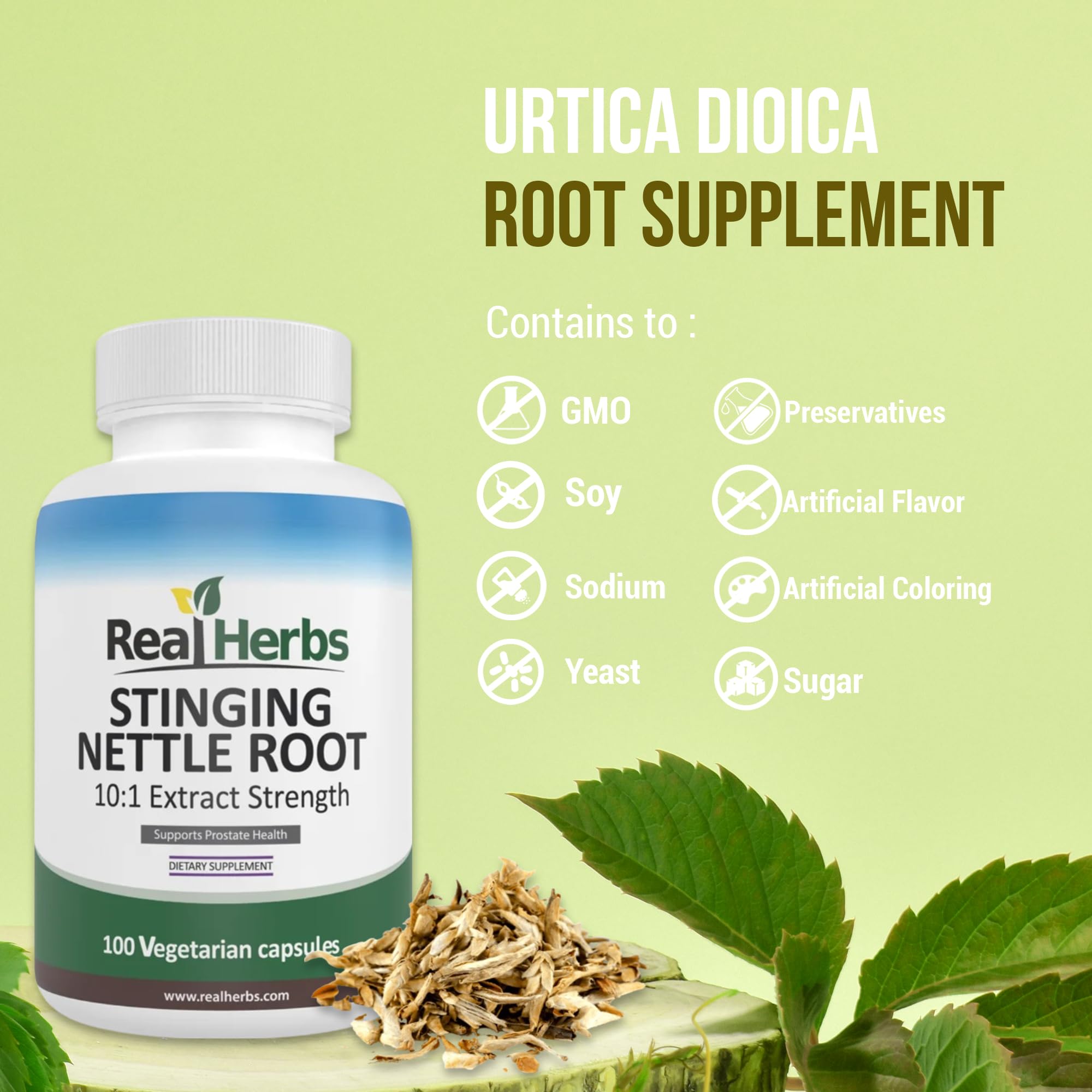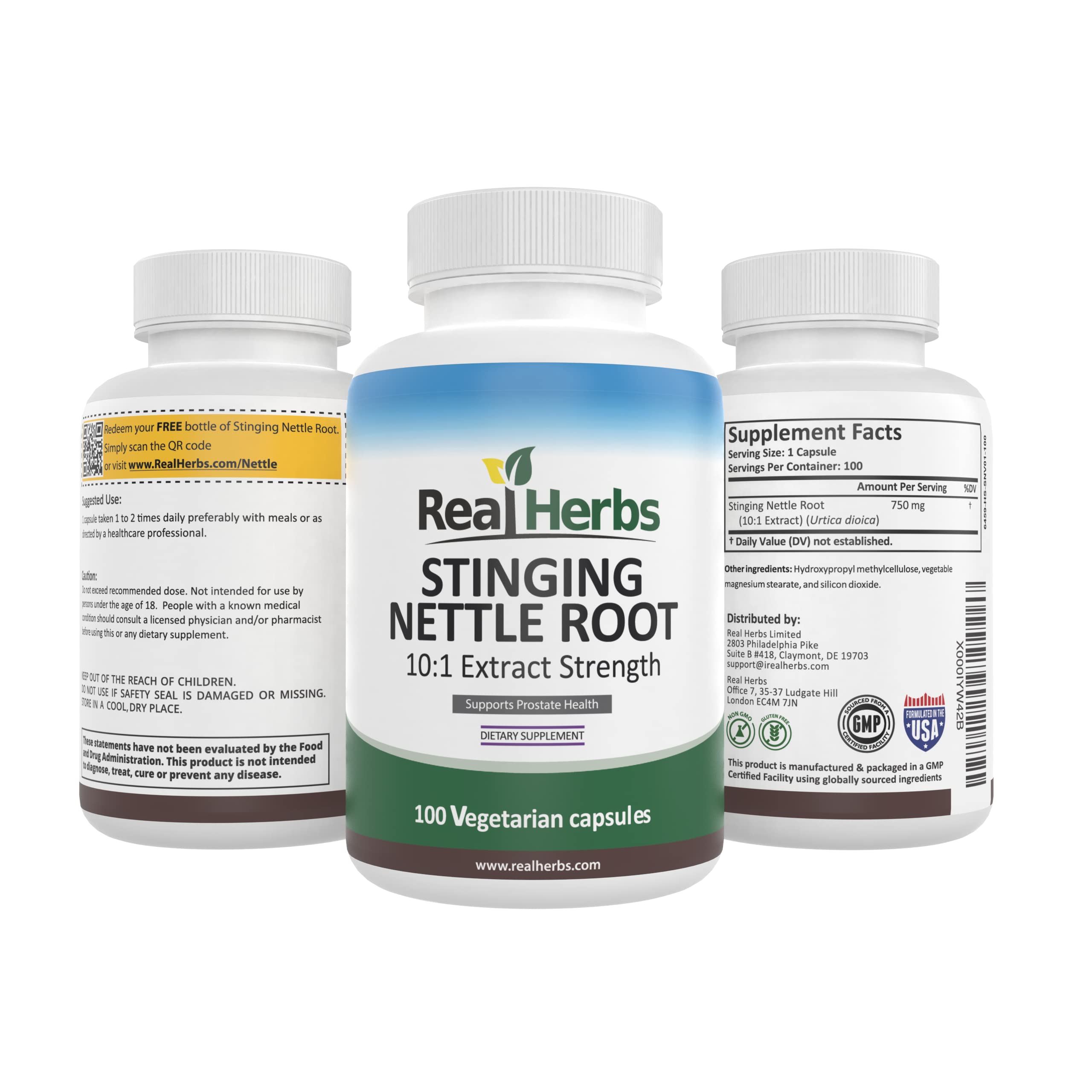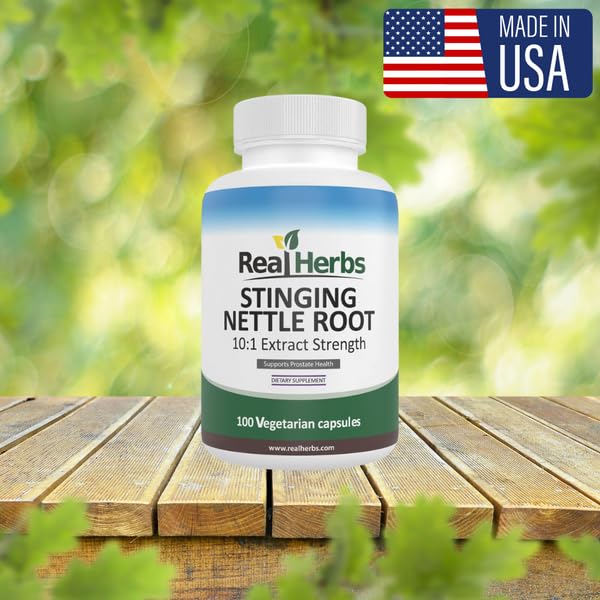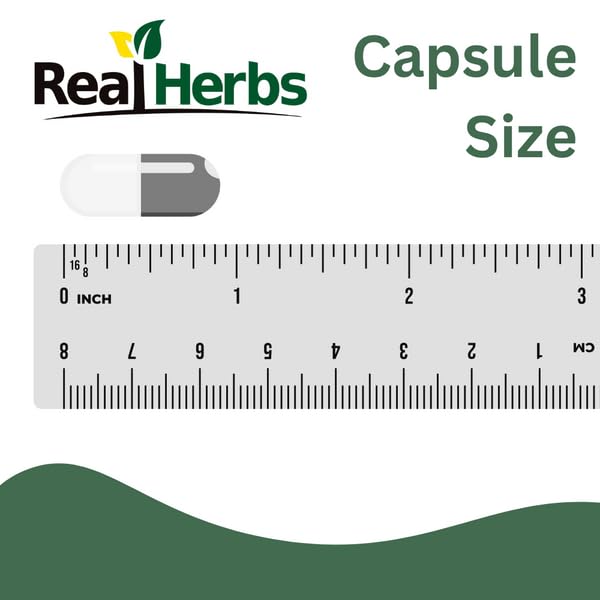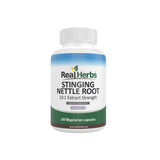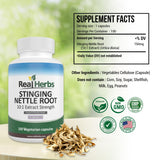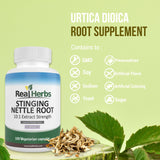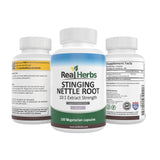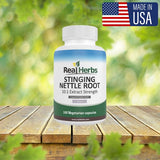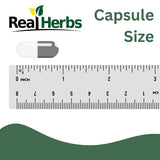Nettle Root vs. Nettle Leaf: The Definitive Comparison
Nettle Root vs. Nettle Leaf:
The Definitive Comparison
An essential guide by Jessica Johnson, Herbal Science Researcher at Real Herbs.
Deciphering the Nettle Plant for Optimal Herbal Use
When exploring the world of herbal remedies, you might often come across terms like "stinging nettle," "nettle leaf," and "nettle root." While they all originate from the same remarkable plant species, *Urtica dioica*, understanding the distinctions between the plant as a whole and its specific parts is crucial. Each part possesses a unique chemical composition and, consequently, offers different therapeutic benefits. This can lead to confusion, as using the wrong part for a specific health concern may not yield the desired results.
This article aims to provide a definitive comparison between **nettle root** and **nettle leaf**, clarifying their unique properties, traditional uses, and scientifically supported benefits. By highlighting their distinct phytochemical profiles and primary applications, we will empower you to make informed choices for targeted wellness outcomes. Discover how to harness the precise power of each part of the stinging nettle plant.

Understanding the Stinging Nettle Plant (*Urtica dioica*)
The term "stinging nettle" refers to the entire *Urtica dioica* plant, which is a herbaceous perennial found widely across temperate regions globally. It's famously known for its fine, hollow hairs (trichomes) on the leaves and stems that release irritating chemicals upon contact, causing a temporary stinging sensation. Despite this defense mechanism, the whole plant has been a staple in traditional medicine, folklore, and cuisine for centuries [5].
As a whole, *Urtica dioica* is valued for its rich nutritional content, including vitamins, minerals, amino acids, fatty acids, and a broad spectrum of bioactive compounds present in varying concentrations across its different parts [2, 10].
Nettle Leaf: Benefits from the Aerial Parts
Nettle leaf refers to the aerial parts of the stinging nettle plant—its leaves and upper stems. These parts are typically harvested in spring and early summer when they are most tender and nutritionally dense.
- Chemical Composition: Nettle leaves are rich in flavonoids (like quercetin and kaempferol), carotenoids, vitamins (A, C, K, and B vitamins), minerals (iron, calcium, magnesium), amino acids, and various phenolic compounds [1, 2, 7, 10]. The specific phenolic compounds can vary between leaves and roots [8]. While fresh leaves contain histamine-like compounds responsible for the sting, these are typically denatured during drying or processing for teas and supplements [5].
-
Primary Health Benefits & Uses: Nettle leaf is widely used for:
- Allergy Support: It may help modulate histamine response, making it a popular natural aid for seasonal allergies [5].
- Anti-inflammatory / Anti-rheumatic: It is used for broader inflammatory conditions and joint health, with extracts shown to inhibit pro-inflammatory pathways [5].
- Diuretic Properties: Nettle leaf acts as a general diuretic, promoting healthy urination and assisting in flushing toxins [5].
- Nutritional Support: Highly valued as a nutritious food source, often consumed as tea or in culinary dishes. Its mineral properties and dietary value are well-documented [9].
Nettle Root: Benefits from the Underground Power
Nettle root refers specifically to the underground part of the *Urtica dioica* plant. The roots are typically harvested in autumn or early spring when their beneficial compounds are most concentrated [3].
- Unique Chemical Composition: Nettle root has a distinct phytochemical profile compared to the leaves. It is particularly rich in lignans, plant sterols (like beta-sitosterol), and scopoletin [1, 3]. These compounds are often unique to the root or present in different concentrations than in the leaves [1, 8, 12]. A comprehensive review highlights the "power underground" of nettle roots, detailing their composition and functional potential [3].
-
Primary Health Benefits & Uses: Nettle root is predominantly recognized and researched for its effects on male health:
- Prostate Health (Benign Prostatic Hyperplasia - BPH): It is a well-established herbal remedy for symptoms of BPH, helping to improve urinary flow and reduce nighttime urination [3, 5].
- Testosterone Support: The lignans in nettle root can interact with Sex Hormone Binding Globulin (SHBG), potentially increasing levels of "free" (bioavailable) testosterone [3].
The Definitive Comparison: Nettle Root vs. Nettle Leaf
While both parts of the stinging nettle plant offer impressive health benefits, their distinct chemical compositions lead to different primary applications. This table summarizes the key differences:
Why the Distinction Matters for Targeted Health
Understanding the differences between nettle root and nettle leaf is crucial for effective herbal supplementation. Using the correct part of the plant ensures you are targeting your specific health concerns with the most appropriate compounds. For instance, while both are from *Urtica dioica*, their distinct bioactive profiles mean they are not interchangeable for all uses [7, 12].
- If your goal is to support **prostate health** or optimize **testosterone levels**, you should specifically seek out **stinging nettle root extract**.
- If you are looking for relief from **seasonal allergies**, general **inflammation**, or to boost your **nutritional intake**, then **nettle leaf** preparations (teas, capsules, dried herbs) would be more appropriate.
Safety and General Considerations for Both Parts
While nettle is generally considered safe for most individuals when used appropriately, it's important to be aware of general precautions that apply to both the leaf and the root [5, 6]:
- Mild Side Effects: Both parts can cause mild gastrointestinal upset (e.g., stomach discomfort, diarrhea) or a mild diuretic effect [5].
- Drug Interactions: Nettle can interact with certain medications, including blood thinners (due to Vitamin K content), blood pressure medications, and diabetes drugs. Always consult your healthcare provider if you are on medication [5, 6].
- Pregnancy and Breastfeeding: Nettle is generally not recommended during pregnancy or breastfeeding due to insufficient safety data [6].
- Professional Guidance: Always consult with a qualified healthcare professional before starting any new supplement, especially if you have existing health conditions or are taking other medications.
Conclusion: Making Informed Choices with Stinging Nettle
To definitively answer the question, "**Is stinging nettle and nettle root the same?**" — no, they are not interchangeable, though they come from the same plant. "Stinging nettle" refers to the entire *Urtica dioica* plant. **Nettle root** is a specific part of that plant, distinguished by its unique chemical composition (rich in lignans and sterols) and specialized benefits, primarily for **prostate health and testosterone support** [3]. Conversely, **nettle leaf** (the aerial parts) offers a different set of therapeutic properties, including support for allergies, general inflammation, and nutritional benefits [2, 5].
Understanding these crucial distinctions empowers you to make informed decisions when selecting herbal remedies. By choosing the specific part of the stinging nettle plant that aligns with your health goals, you can effectively harness its potent benefits. Always prioritize high-quality products from reputable sources and consult with a healthcare professional to ensure safe and effective integration into your wellness journey.
Ready to experience the benefits of Stinging Nettle Root?
Real Herbs Stinging Nettle Root Extract is a premium, potent supplement designed to support healthy testosterone levels, prostate health, and overall male vitality. Crafted for purity and efficacy, it helps liberate your free testosterone, so you can enjoy enhanced energy, improved performance, and a renewed sense of well-being.
Who it helps: Men experiencing symptoms of low testosterone, seeking natural prostate support, or looking to optimize their overall male health naturally.
Why it’s safe/trusted: Manufactured under strict quality controls, Real Herbs prioritizes purity and potency, ensuring you receive a product you can trust.
All our products are backed by our 100-Day Money-Back Guarantee!
"I've been using Real Herbs Stinging Nettle for a few months now, and I've noticed a significant improvement in my energy levels and overall vitality. Highly recommend it!" - Mark T.
"As someone approaching 50, I was looking for natural ways to support my health. This product has genuinely made a difference in my energy and mood." - David S.
Disclaimer: The information provided in this article is for educational purposes only and is not intended as medical advice. Always consult with a qualified healthcare professional before making any decisions about your health or starting any new supplement regimen. These statements have not been evaluated by the Food and Drug Administration. This product is not intended to diagnose, treat, cure, or prevent any disease.
Scientific Credibility & Citations
- Tarasevičienė Ž, Vitkauskaitė M, Paulauskienė A, Černiauskienė J. Wild Stinging Nettle (*Urtica dioica* L.) Leaves and Roots Chemical Composition and Phenols Extraction. *Plants (Basel)*. 2023 Jan 9;12(2):309. PMC9864842 (Research Article)
- Jeszka-Skowron M, Smarzyński A, Słupski J, Walkowiak-Tomczak D. Variation in the Content of Bioactive Compounds in Infusions Prepared from Different Parts of Wild Polish Stinging Nettle (*Urtica dioica* L.). *Molecules*. 2022 Jul 7;27(13):4356. PMID: 35807487 (Research Article)
- Ahmad SS, Alam S, Siddiqui AA, Ansari SA. Stinging Nettle (*Urtica dioica*) Roots: The Power Underground—A Review. *Plants (Basel)*. 2024 Mar 24;13(7):933. PMID: 39861633 (Review)
- Moraga-Chrubasik S, et al. Chemical Composition and Immuno-Modulatory Effects of Urtica dioica. *Phytother Res*. 2009 Nov;23(11):1511-1520. PMID: 28544187 (Review)
- Kregiel D, Pawlikowska E, Antolak H. Urtica spp.: Ordinary Plants with Extraordinary Properties. *Molecules*. 2018 Jul 7;23(7):1664. PMID: 29987208 (Review)
- National Institute of Diabetes and Digestive and Kidney Diseases. Stinging Nettle. In: LiverTox: Clinical and Research Information on Drug-Induced Liver Injury [Internet]. Bethesda (MD): National Institute of Diabetes and Digestive and Kidney Diseases; 2012-. 2023 Mar 3. Link to LiverTox (Information Source)
- Dhouibi R, Affes H, Ben Salem M, Hammami S, Sahnoun Z, Zeghal KM, Ksouda K. Screening of pharmacological uses of Urtica dioica and others benefits. *Prog Biophys Mol Biol*. 2020 Jan;150:67-77. PMID: 31163183 (Review)
- Tarasevičienė Ž, Vitkauskaitė M, Paulauskienė A, Černiauskienė J. Wild Stinging Nettle (*Urtica dioica* L.) Leaves and Roots Chemical Composition and Antioxidant Activity. *Plants (Basel)*. 2023 Jan 9;12(2):309. PMC9864842 (Research Article)
- Kianbakht S, Khalighi-Sigaroodi F, Dabaghian FH. Improved glycemic control in patients with advanced type 2 diabetes mellitus taking Urtica dioica leaf extract: a randomized double-blind placebo-controlled clinical trial. *Clin Lab*. 2013;59(9-10):1071-1076. PMID: 24273930 (Human Clinical Trial)
- Bhusal KK, Magar SK, Thapa R, et al. Nutritional and pharmacological importance of stinging nettle (*Urtica dioica* L.): A review. *Heliyon*. 2022 Jun 22;8(6):e09717. PMC9253158 (Review)
- Urtica dioica L.: Nutritional Composition, Bioactive Compounds, and Functional Properties. *Molecules*. 2022 Aug 23;27(17):5429. PMC9413031 (Review)
- Zouhir M, et al. The medicinal chemistry of Urtica dioica L. *Molecules*. 2023 Apr 19;28(8):3579. PMC10176313 (Review)
- Chrubasik JE, Roufogalis BD, Wagner H, Chrubasik S. A comprehensive review on nettle efficacy (Part I). *Phytomedicine*. 2007 Aug;14(7-8):568-79. (ScienceDirect Link)

